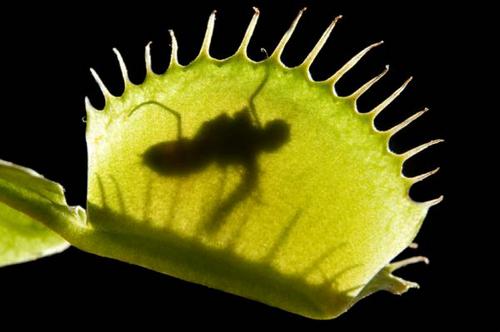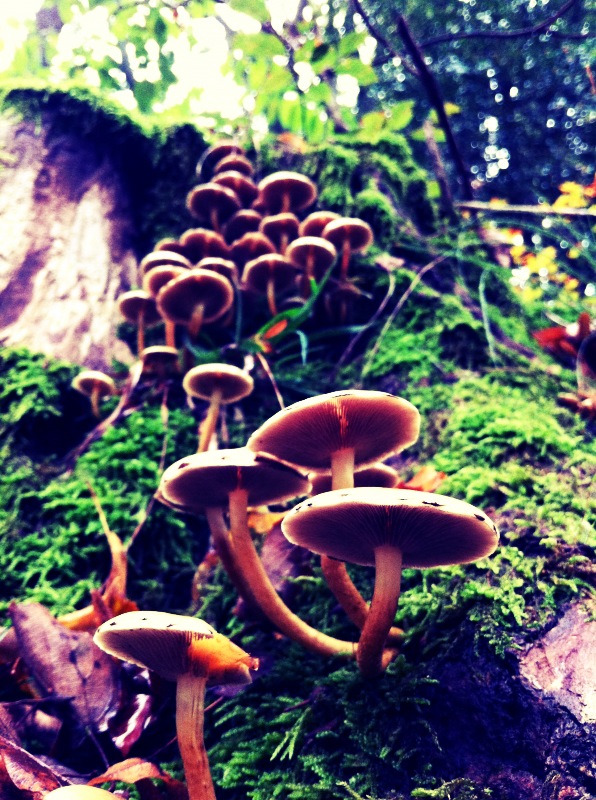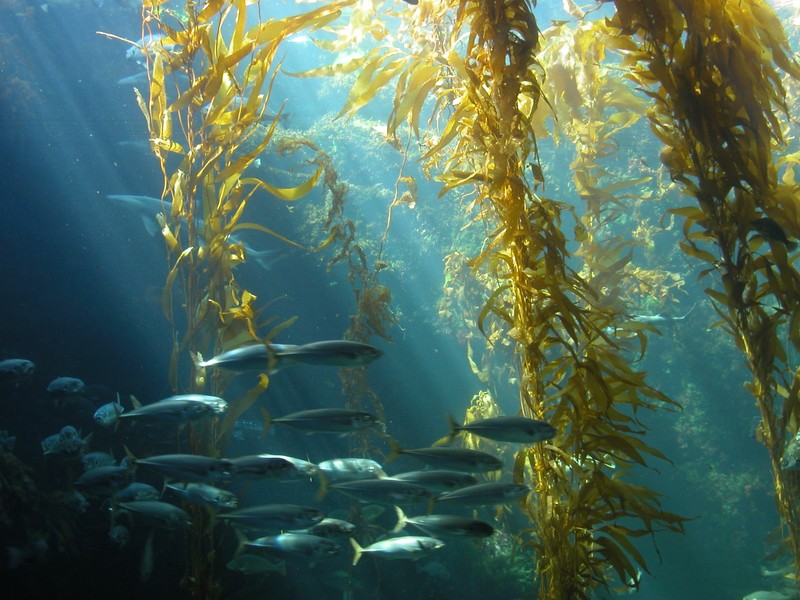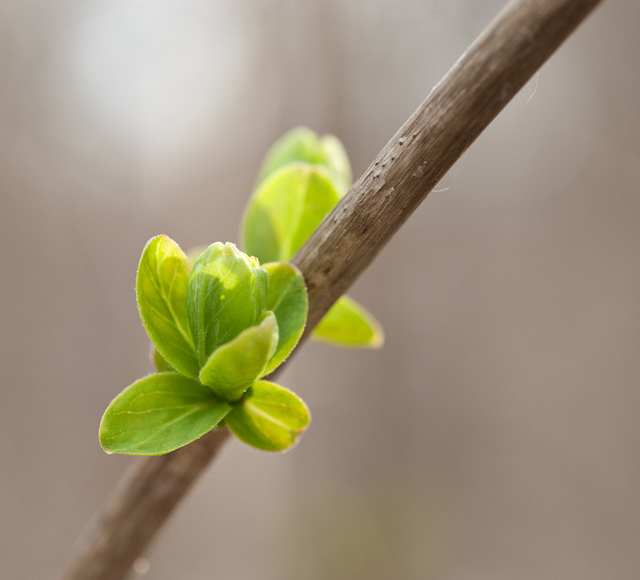The questions below are designed to help you prepare for an upcoming TEST on the ideas developed during our Plant unit. Many of these ideas are presented in your Food For Plants and Power Plant packets. Use these questions to help you prepare for the final unit test.
CHALLENGE QUESTION #1:
In class Mr. M showed you a tall glass beaker with an aquatic plant trapped under an inverted glass funnel. The funnel directed the gas produced by the plant up into an inverted (upside down) glass test tube. What is the gas that is being produced by the plants and trapped in the test tube? Where does this gas come from? Can you trace it back in time and location?

CHALLENGE QUESTION #2:
A Venus fly trap plant uses specially adapted leaves to capture flies and other small insects. These same leaves produce digestive juices that help dissolve the bodies of the insects and travel into the body of the plant. Students often think that the insects are ‘food’ for the plants. However, Venus fly trap plants also have normally functioning leaves. They perform photosynthesis in them. This means that Venus fly trap plants are constantly producing glucose inside their leaves to use as a source of energy. So, why do you think these plants spend time and energy trapping and consuming insects? Using your knowledge of plants and plant processes. Please explain this unique behavior.
CHALLENGE QUESTION #3:
Chlorophyll is the name of the chemical inside of plants which help give them their green color. A single molecule of chlorophyll has the chemical formula: C55H72O5N4Mg. Where does your plant get each of the elements that are contained in a single molecule of chlorophyll? Please try to list a) the location of the element in the environment around the plant and b) the specific name (or names) of the molecule (or molecules) in which these elements are likely to be found.

CHALLENGE QUESTION #4:
Luis was observing his plants and saw two mushrooms (fungi) growing next to his plants in the soil. The mushrooms had no leaves (just something called a ‘cap’), no stem (just something called a stalk), and absolutely no green color (it was mostly brown and black). In class, we said this probably means that the mushrooms are not capable of performing photosynthesis. However, we also said they are living organisms, so their cells require a source of usable energy. Should Luis be worried about the presence of these mushrooms in his soil? Should he leave the mushrooms in the soil or remove them. Please give Luis some advice and explain your reasoning.
CHALLENGE QUESTION #5:
Molly and Gabby each have 4 plants growing in their plant chambers on day 12. They are all close to the same size. On day 13, Gabby removes one of her plants so that she now has 3 plants growing in her plant chamber. If the girls continue to raise their plants this way, whose plants do you predict would be taller on day 40? Please explain your prediction in terms of the process of photosynthesis.

CHALLENGE QUESTION #6:
Mr. M likes to scuba dive at his lake house in the summer. On this day, he decides to start diving in a shallow part of the freshwater lake near the shore (1 m deep) and make his way–very slowly–to the deepest part of the lake (30 m). In the shallow area, he notices that there are many plants growing in and underneath the water. When it comes to the total number of plants around him, what do you think he will see as he swims deeper and deeper? When it comes to average height of the plants around him, what do you think he will see as he swims deeper and deeper? Please explain in terms of the process of photosynthesis.
CHALLENGE QUESTION #7:
A small Brassica rapa seed weighs less than 1 gram, yet a full-grown Brassica rapa plant will probably have a mass over 14 grams. Were does most of the over 13 grams of new mass come from? Explain.

CHALLENGE QUESTION #8:
In the early spring, large trees often have to make new leaves to replace the ones they dropped to the ground just prior to winter. Like the rest of the tree, the new leaves are made of many different types of molecules and the molecules are made of many different types of atoms. As a student who now knows a lot about plants, you have the ability to tell someone where all of the atoms needed to make new leaves come from. So, where do all of the ‘raw’ materials needed to make the new leaves come from? Where are the only places they could come from?
CHALLENGE QUESTION #9: “beta-Carotene” (or ?-Carotene) is a reddish-orange colored chemical pigment found in many plants and fruits. Probably the most famous vegetable for its high amounts of beta-Carotene is the carrot. A single molecule of beta-Carotene has the chemical formula: C40H56. Where does your plant get each of the elements that are contained in a single molecule of beta-Carotene? Please try to list a) the location of the element in the environment around the plant and b) the specific name (or names) of the molecule (or molecules) in which these elements are likely to be found.
CHALLENGE QUESTION #10: In class we began our plant unit by planting 4 Brassica rapa seeds per container. On Day 12, your were told to remove some of these plants and transplant them to a different container. Using the terms and ideas of “photosynthesis,” please explain what effect(s) this will have on the 2-3 plants that remain in the original container.